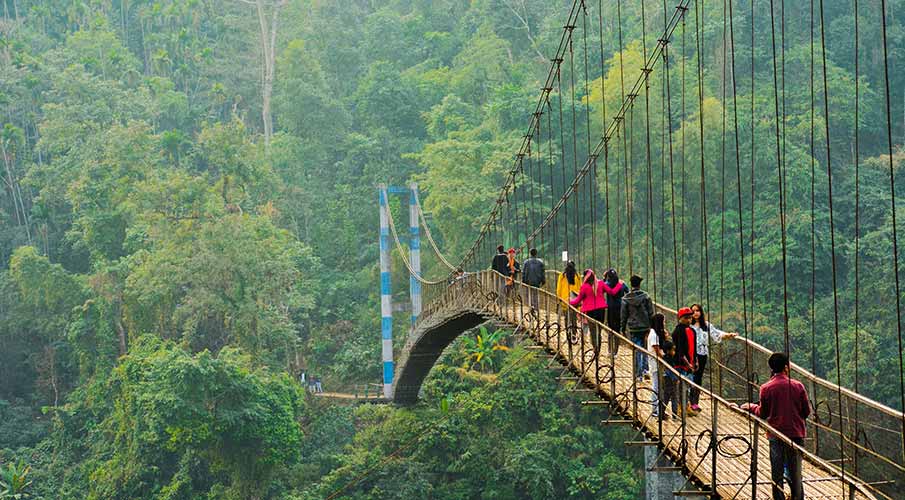Naohkseh War Memorial
This memorial is dedicated to the matryrs of World War-I. A large number of people from this area had served as soldiers and were deployed in foreign lands during that period. It was built by the Government of India on 26th January in the year 1936 in remembrance of all the gallant soldiers who lost their lives in that war. Shnongpdeng was chosen for this memorial because it is believed that many soldiers originated from here.
Naohkseh Museum is located inside Naohkseh War Memorial and houses a collection of historical objects dating back to the British Raj. You can find different kinds of old battle tanks & guns here and some other weapons used by soldiers during wars back in those days.
Nohkalikai Falls near Shnongpdeng
This waterfall drops off from a height of more than 1000, making it one of the highest waterfalls in Meghalaya. There are quite a few other famous waterfalls around Shnongpdeng, but we found Nohkalikai falls to be the most beautiful among them all. The waterfall is just outside the Nature Park, which closes by 7 pm, so you can spend more time here before heading back for your overnight stay place.
Kamala Kumar Bhattacharya Museum
This museum is located inside Kamala Kumar Bhattacharya's house, which happens to be one of the greatest musicians Meghalaya has ever produced! He was born in Shillong & spent his childhood years here, later migrating to Kolkata (formerly known as Calcutta) to explore his musical career. He's credited for having brought many instruments to the world of Indian music & is also popularly known as 'Sur Samrat' of North East India. The museum houses some old musical instruments that he used while performing and other memorabilia related to him. There are two pianos, a harmonium, drums, violins, guitars, among other things on display here. Even though they are quite old, but are still in good condition.
